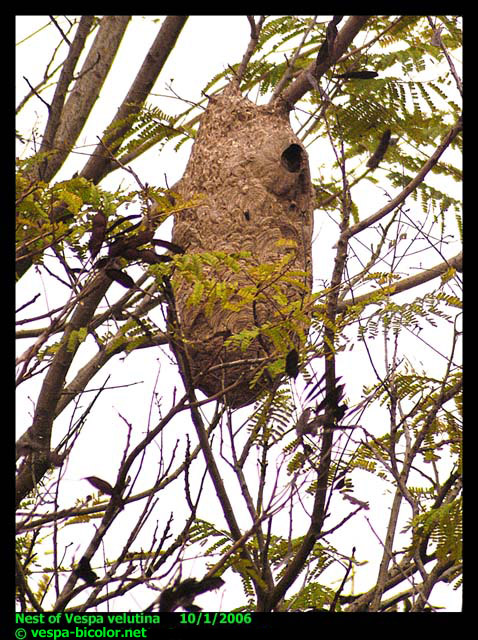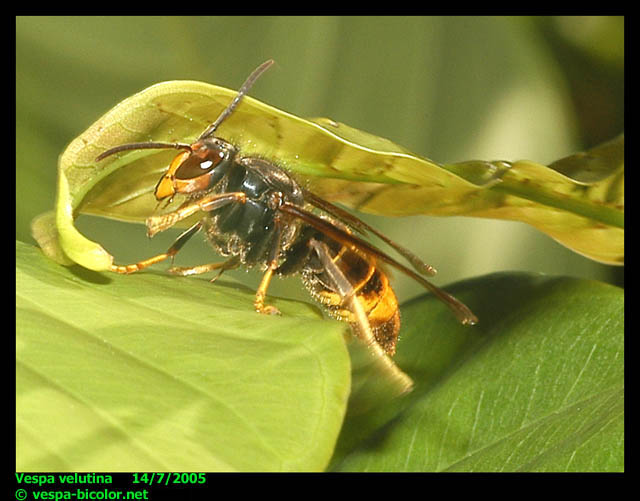
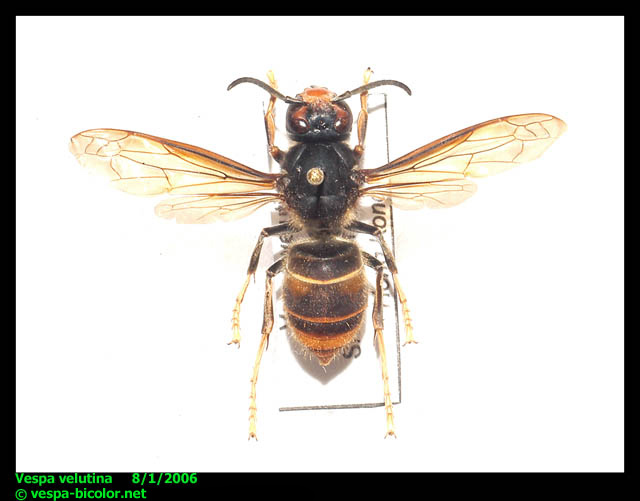

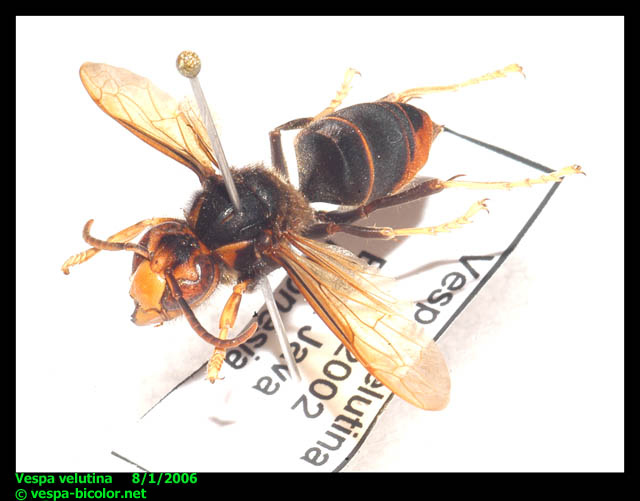
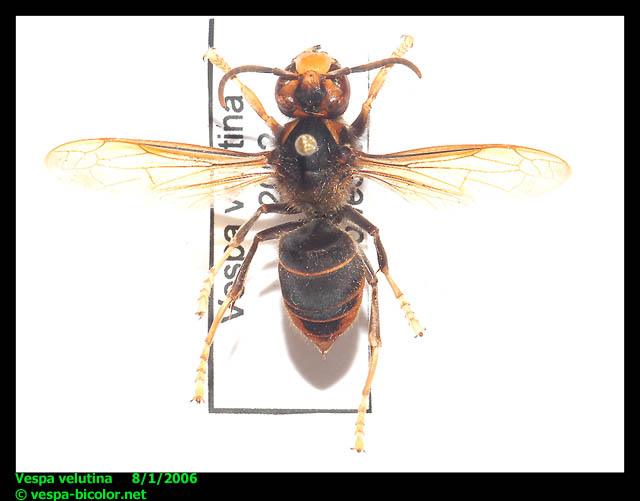
Above: A specimen of Vespa velutina from Java, Indonesia, in my collection. Note the overall similarities, and the differences; differences in distribution and intensity of orange markings on the abdomen, as well as a reddish brown pronotum (the sides and front of the thorax nearest to the head).
Below: Vespa velutina ardens, another interesting subspecies from Lombok, Indonesia. This looks extremely different; note the thorax in particular. Photo copyright and courtesy of Jean-Luc Renneson (Belgium). Specimen from collection of Natural History Museum of Brussels.
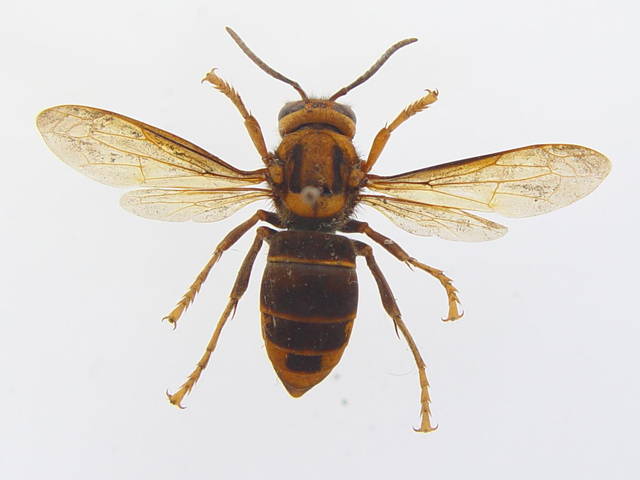
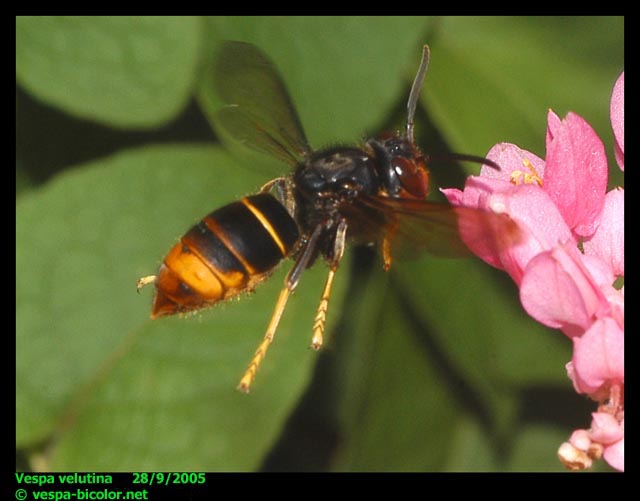
When I was younger, Vespa velutina was not very common. This is surprising, since it has become very common in recent years. It can frequently be found in urban parks, wasteland, country parks and rural areas, and sometimes appears near urban areas.
This species often practices nest relocation. The queens usually start building low, in bushes and shrubs, or underground. When the colony grows, they then start building a new nest in the new location, almost always high in a tree. The queen and several workers move over, and the queen continues laying eggs in the new nest. The remaining larvae are raised to maturity by the workers in the old nest, and then gradually the old nest is abandoned. I have not actually seen the relocation process, but I did observe relocations in several nests which were built low. New nests usually appeared in the exact area, and were usually already quite large by the time they were noticeable. They are also a very resilient species which can rebuild the nest in a short space of time. The nest in the photo below, for example, was built in the space of less than a week, after the original nest was destroyed by pest control operators. (The original nest was at least 60cm long, but the reconstruction of this nest, at 40cm or so, is still fantastic, considering it was done in less than a week). You can also see the difference in the texture of the envelope where part has been extensively repaired while another part is still crudely done.
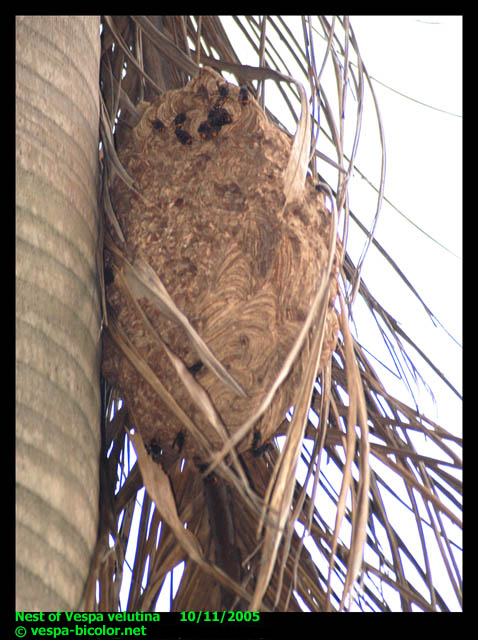
Vespa velutina is a generalist predator on all types of insects. They frequently take flies and honeybees. They also hunt dragonflies with amazing success; it is fascinating to watch them chase dragonflies in flight. They are probably among the best hunters, and have fantastic flight skills. The photo below shows one of Vespa velutina's many hunting techniques; here, the wasp lurks in dense foliage and suddenly darts out to intercept passing prey.
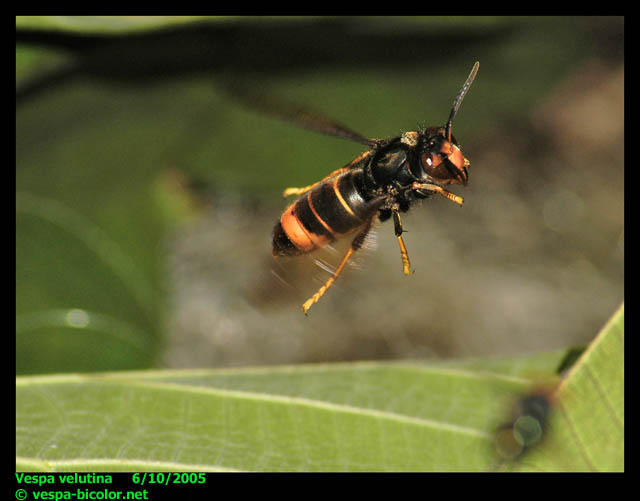
The nest of Vespa velutina, as previously mentioned, is usually high in a tree. It is generally elongated, and looks similar to the nest of Vespa affinis. However, it can be distinguished by having a more tubular-imbricate nest envelope (the layers of papering run vertically lengthwise, as opposed to overlapping arc-shaped sections), sometimes with only very slight, indisctinct arc-shaped marks, and the nest has a far rougher, more crude texture. It can often reach 60 cm in length. This species has a long life cycle; the queens awake from hibernation as early as late March, and the colony usually dies only in January. A huge nest of this species is shown here.
